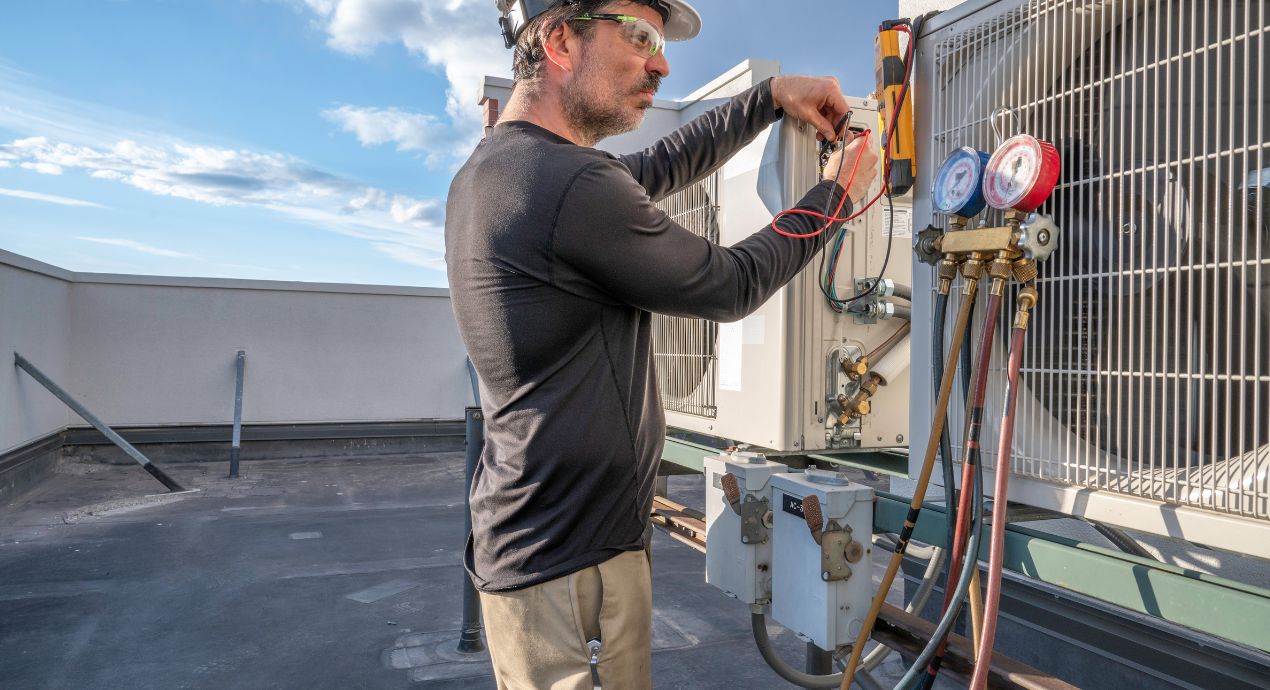
Contemplating coverage?
Subscribe to receive our emails & get
$200 off!
Have questions?
Call us: (833) 544-8273


Written By Ellie Brooks
The U.S. Department of Energy (DOE) maintains minimum energy efficiency standards for residential and commercial appliances. Every six years, the agency reevaluates its standards and releases new guidelines that appliance manufacturers, homebuilders, and homeowners must follow.
On January 1, 2023, the DOE’s new HVAC regulations will go into effect. What does this mean for property owners? This article will cover all you need to know about upcoming changes to HVAC regulations and standards.
Political efforts to enact energy efficiency standards started in California in the early 1970s. By 1987, Congress passed the National Appliance Energy Conservation Act. In the decades that followed, lawmakers wrote additional pieces legislation, including the Energy Policy Act of 1992 and 2005 and the Energy Independence and Security Act of 2007.
These policies have codified minimum energy conservation standards for dozens of categories of home appliances and equipment. The result has been marked reductions in energy waste and substantial savings for the government and average American alike. The DOE estimates that American homeowners saved $63 billion in 2015 alone, and the agency anticipates cumulative savings of more than $2 trillion by 2030.
The DOE has a few metrics to gauge the efficiency of heating and cooling equipment. Some of these metrics and corresponding regulations vary by region.
Recently, the DOE has changed how it tests air conditioners, heat pumps, and other HVAC equipment. These revised testing procedures have necessitated a new generation of efficiency ratings, which the DOE has dubbed SEER2, EER2, and HSPF2. Because the DOE’s new testing methods are more stringent—and accurate—SEER2, EER2, and HSPF2 ratings will register a little lower than current SEER, EER, and HSPF ratings for the same appliance.
Homeowners, real estate agents, contractors, and other home professionals concerned with the upcoming 2023 HVAC efficiency standards should be mindful of changes to SEER, EER, and HSPF guidelines as well as the new generation of ratings.
In 2015, the DOE created regional categories to inform home appliance efficiency guidelines. The rationale for this decision is that weather and climate variations affect how dependent people are on heating and cooling equipment. Southern states, for example, have more stringent guidelines for air conditioners than the North.
The DOE is maintaining these regional categories as they roll out the 2023 HVAC regulatory changes. Below is a summary of the current regions.
Required SEER ratings are increasing across the board. In the North, the minimum rating for HVAC equipment will increase from 13 SEER to 14 SEER (13.4 SEER2). In the South and Southwest, the minimum rating for split unit cooling systems that use less than 45,000 BTU/hour will increase from 14 SEER to 15 SEER (14.3 SEER2). Machines that use more than 45,000 BTU/hour will require a rating of 14.5 SEER (13.8 SEER2).
Across all regions, minimum HSPF ratings will increase from 8.2 to 8.8. Furnaces in all regions will require a rating of 81% AFUE. EER requirements will increase for the Southwest.
What does this mean for homeowners? Existing HVAC equipment is fine. There is no need for the average homeowner to purchase new equipment at the beginning of the new year. But as of January 1, 2023, contractors in the South and Southwest may install only HVAC equipment that is compliant with the updated regulations. In the North, contractors can continue to install equipment that does not meet the new standards—as long as that equipment was manufactured before January 1, 2023.
Regardless of the age of your HVAC equipment, a home warranty can keep things running smoothly. If you have home systems coverage through Liberty Home Guard, we’ll ensure that unforeseen malfunctions are resolved swiftly and efficiently—and you’ll save a whole lot of money in the process. Explore our policies by calling (866)-432-1283. You can also get a free quote through our website.
Stay Ahead of Potential
Home Mishaps!
Subscribe to our Liberty Home Guard Newsletter and gain access to exclusive content that ensures your peace of mind.